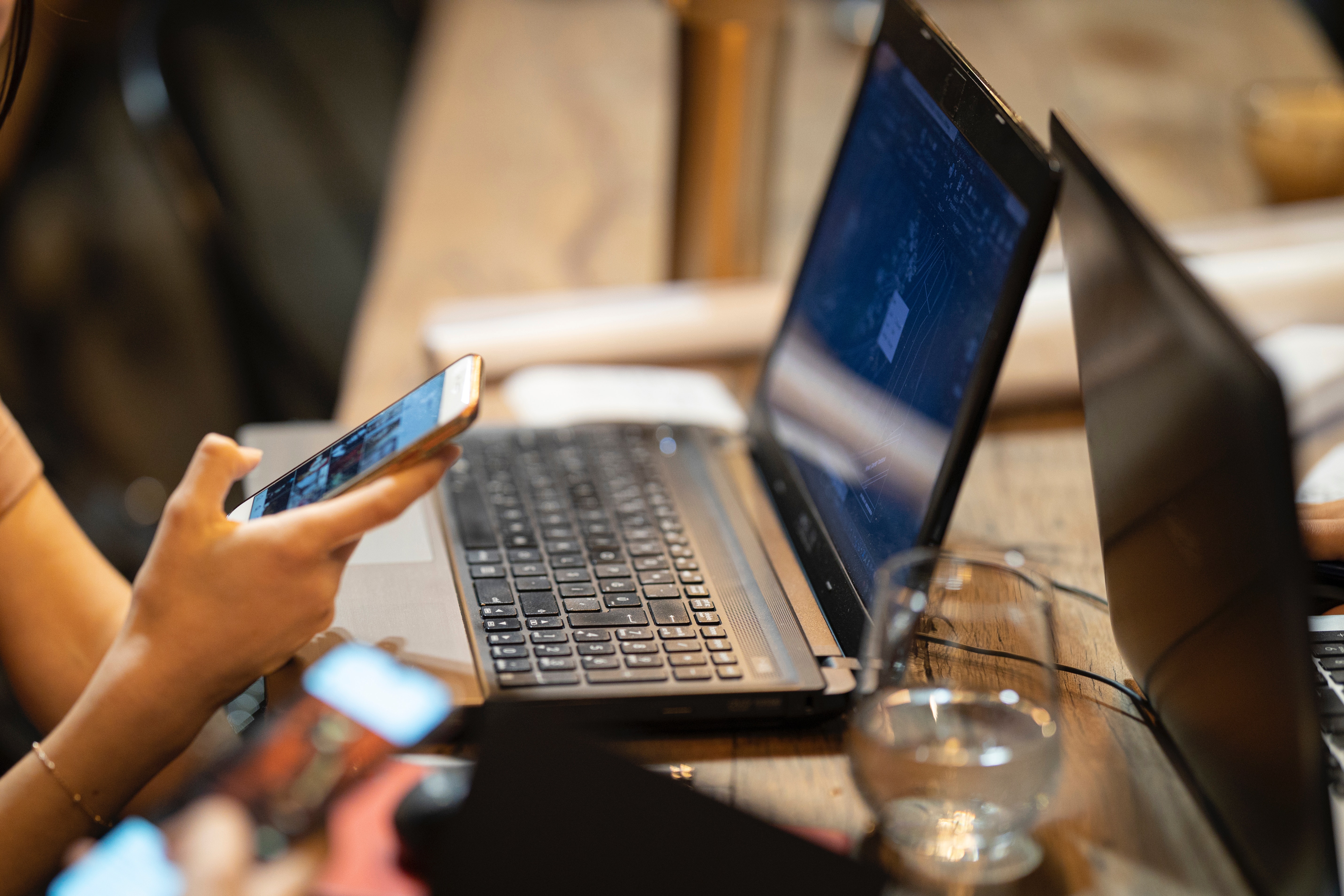
Technology is great for making information more accessible, especially when you might not be able to access other sources directly. There are also ways to make your digital devices, such as laptops, tablets and smartphones, easier to use, read and look at for longer periods. These are general guidelines, not specific to a particular device or program. You may need to look into details on how to enable specific features for your chosen device, app or program.
Enable dark mode
Dark mode or night mode helps to reduce eye strain by cutting down on the bright glare of your screen. If it is available for your device, you can usually activate it under settings that are connected to accessibility or personalisation. Certain apps such as Twitter and Whatsapp also come with their own dark mode built in.
Temporary zoom/magnifier
You might not want to enlarge your whole screen to read. You might just want to focus on a small portion of the screen at one time. To do this, you can enable Zoom in iOS or Magnifier in Windows.
Larger cursors and cursor trails
You can increase the size of the cursor or pointer arrow on your screen to make it easier to spot. You can also include cursor trails, which will help you track the cursor when it is moving. If you have a Mac, there is also an option to enlarge the cursor when you rapidly shake your mouse, so it’s easier to find.
Increase contrast
Increasing screen contrast can help elements and text on screen to stand out. High contrast themes make it easier to distinguish between different elements, such as links, text and buttons.
Colour filters for colour blindness
If you have colour blindness, you can enable colour filters that will help colours appear more distinct on your screen. These can also be enabled under your device’s accessibility settings, if available.
Reducing transparency
Some apps or programs might use transparent layers that look nicer, but may make things more difficult to read. You can enable or disable transparency in your device’s settings, usually under accessibility or personalisation.
Default size of text and content
You can also change the size of text as it normally displays for you, to make things easier to read. You can do this in your Internet browser, or across everything on your device. Some websites are also designed to work with magnification, so they still look good and are easy to read.
Screen readers, text to speech, and voice commands
Your device can read text from the screen to you, and sometimes even describe pictures. This feature is called VoiceOver on iOS and Narrator on Windows. On Android, the feature is available through the Google Accessibility Suite or Google Voice Access.
You can also use VoiceOver to control your iOS device with your voice, instead of relying on the mouse or screen. In Windows, you can do this by enabling the Windows Speech Recognition feature.
Connecting your device to a Braille display
If you want to use your own display, you can connect it to your device and read with it or control the device from there. This process usually involves downloading Braille settings to your device, pairing it to your display, and customising your experience further from there.
Conclusion
There are as many ways to make a digital device more accessible as there are different visual disabilities and levels of disability. By making your device work for you with these accessibility settings, you can gain easier access to a world of information.
References
American Foundation for the Blind (2020) Android for Mobile Phones and Tablets: Considerations for Users with Visual Impairments and Blindness [Accessed: 27 February 2020] Available at: https://www.afb.org/blindness-and-low-vision/using-technology/cell-phones-tablets-mobile/android-mobile-phones-and
American Foundation for the Blind (2020) Apple iOS for iPhone and iPad: Considerations for Users with Visual Impairments and Blindness [Accessed: 27 February 2020] Available at: https://www.afb.org/blindness-and-low-vision/using-technology/cell-phones-tablets-mobile/apple-ios-iphone-and-ipad
Apple (2020) Vision Accessibility – iPhone [Accessed: 27 February 2020] Available at: https://www.apple.com/my/accessibility/iphone/vision/
Apple (2020) Vision Accessibility – Mac [Accessed: 27 February 2020] Available at: https://www.apple.com/my/accessibility/mac/vision/
JR R. (2019) 8 Android accessibility features that’ll enhance any phone [Accessed: 27 February 2020] Available at: https://www.computerworld.com/article/3346010/android-accessibility-features.html
Léonie W. (2005) What is a screen reader? [Accessed: 27 February 2020] Available at: https://www.nomensa.com/blog/2005/what-screen-reader
Microsoft (2020) Windows for each of us [Accessed: 27 February 2020] Available at: https://www.microsoft.com/en-us/accessibility/windows?activetab=pivot_1%3aprimaryr2
Rupesh S. (2016) How to Make Windows 10 More Accessible For People With Low Vision [Accessed: 27 February 2020] Available at: https://beebom.com/how-make-windows-10-more-accessible-people-low-vision/